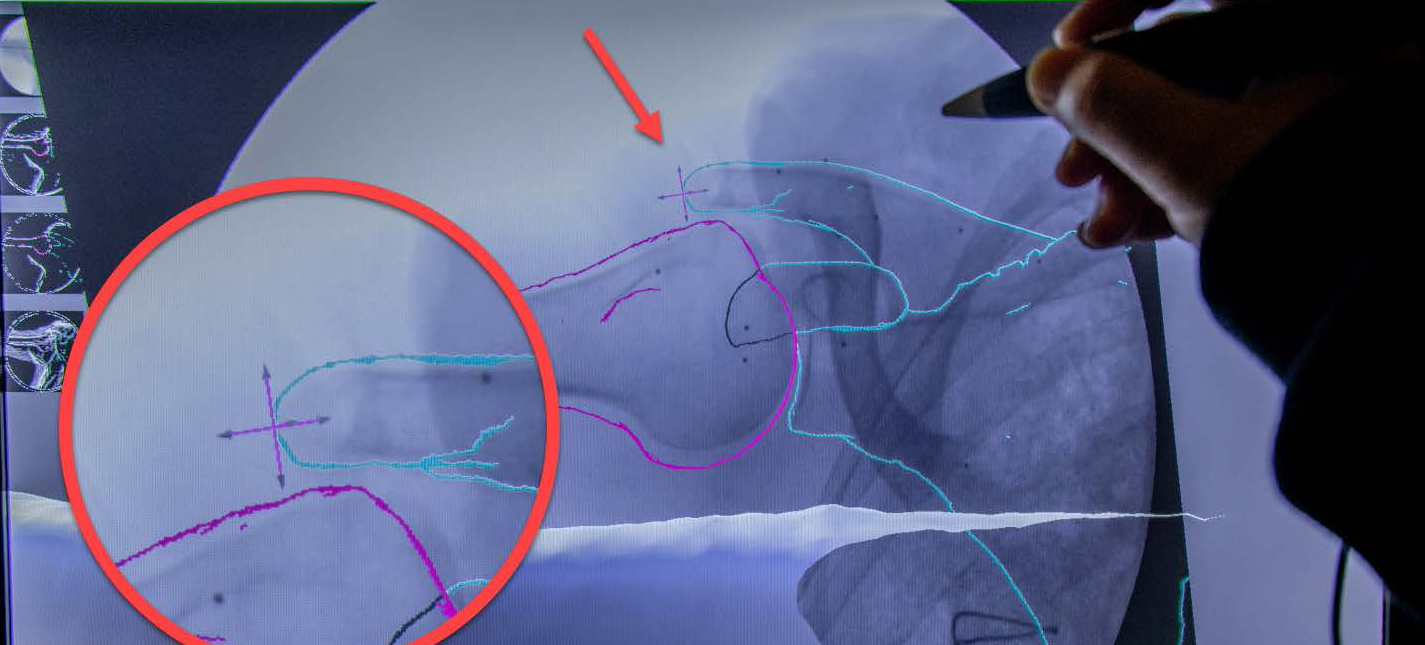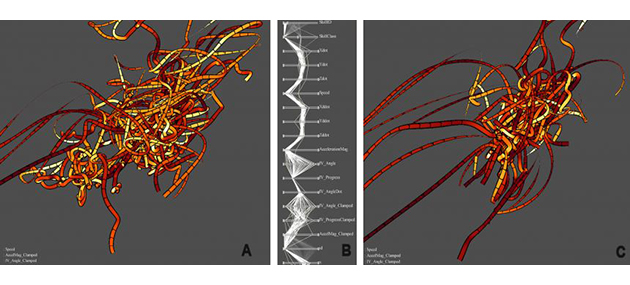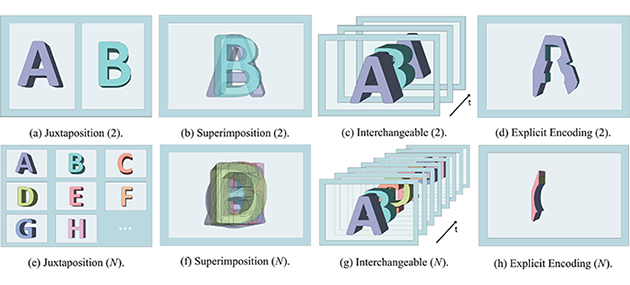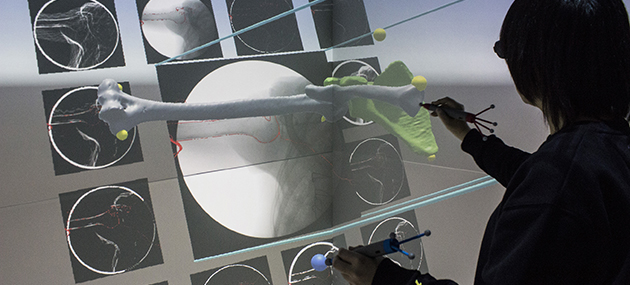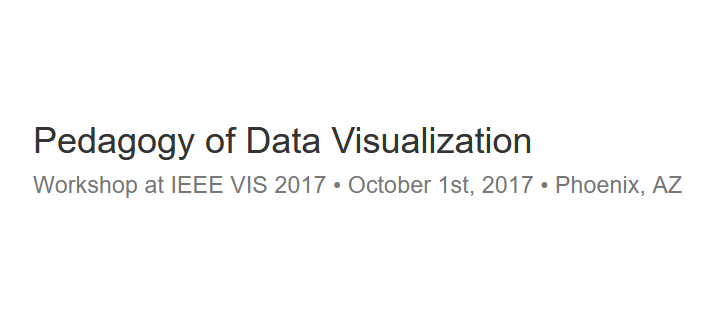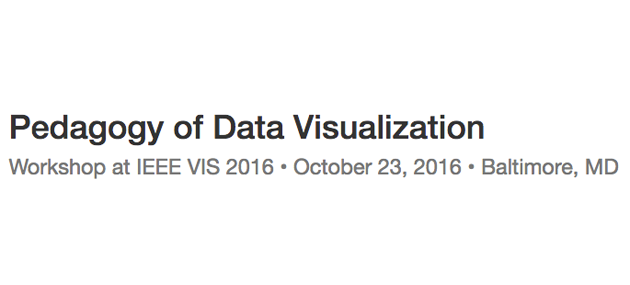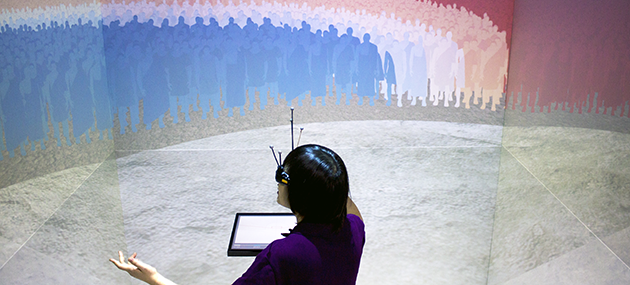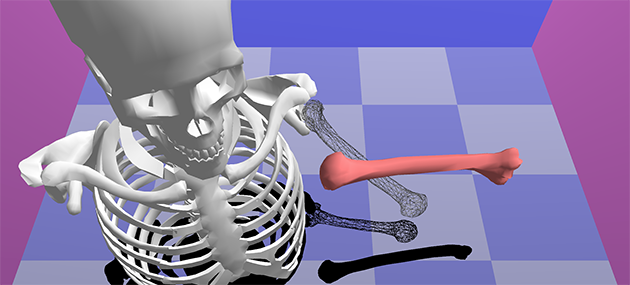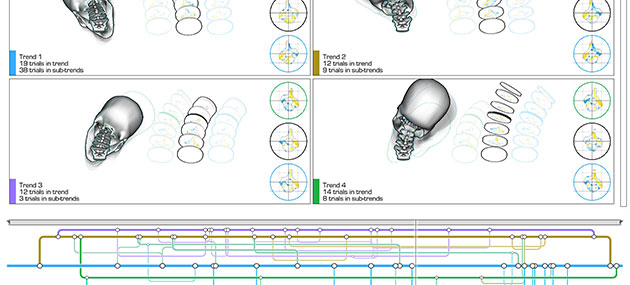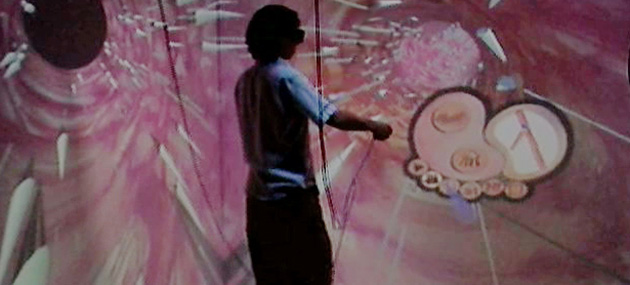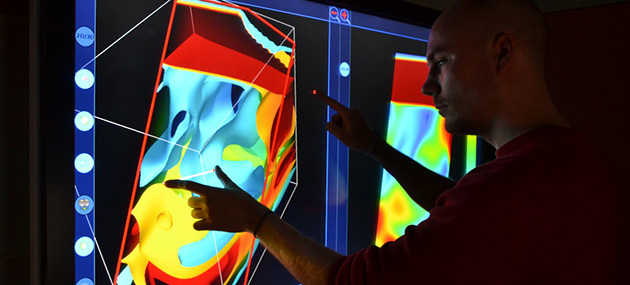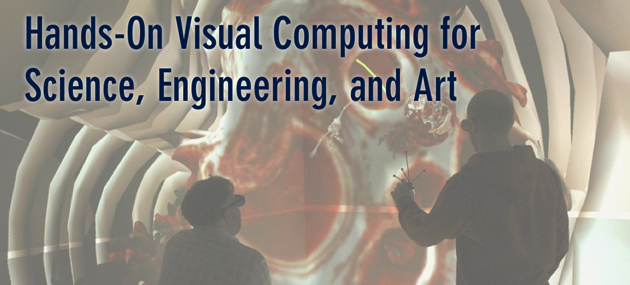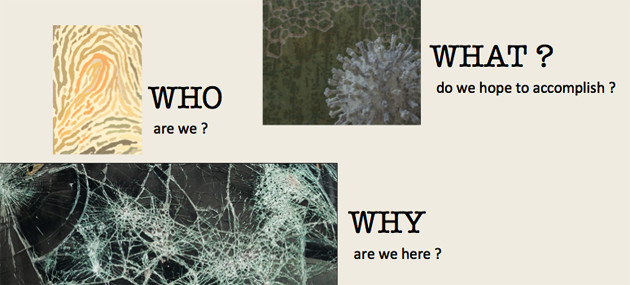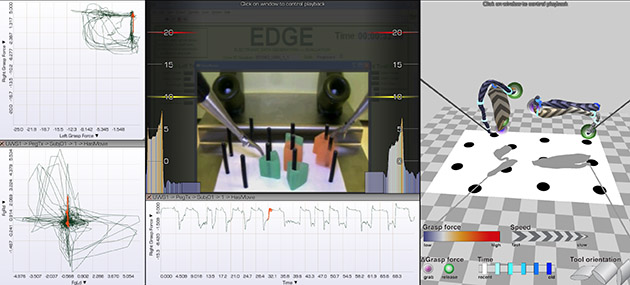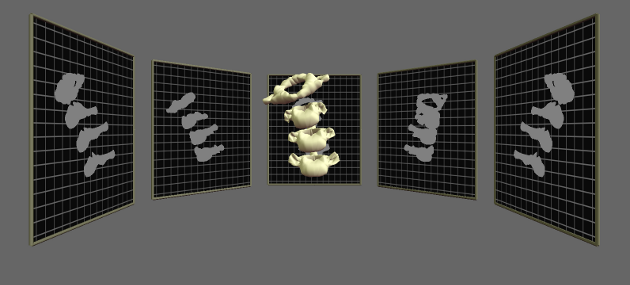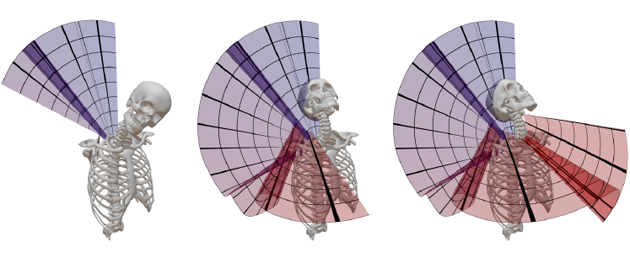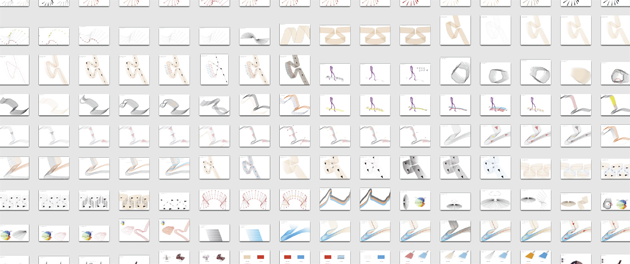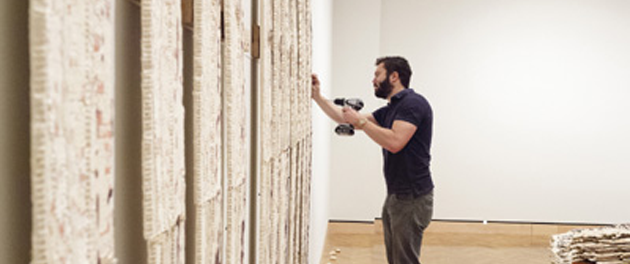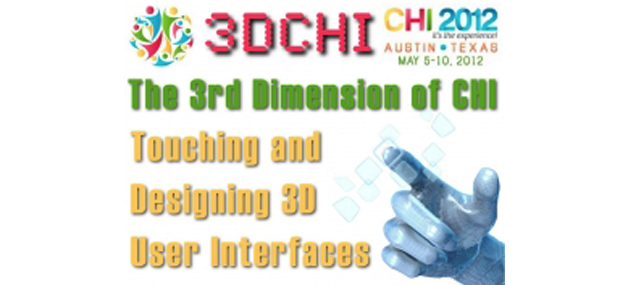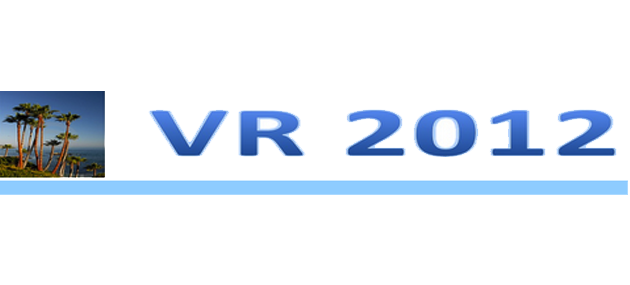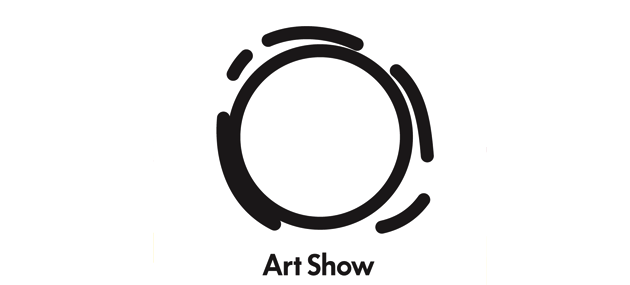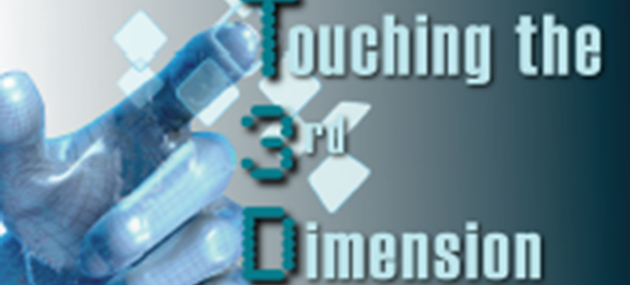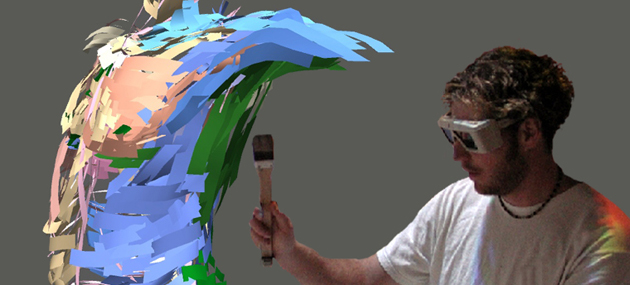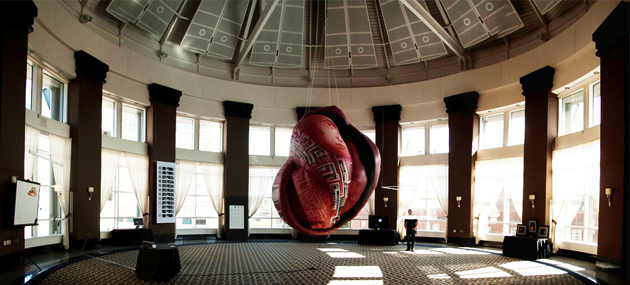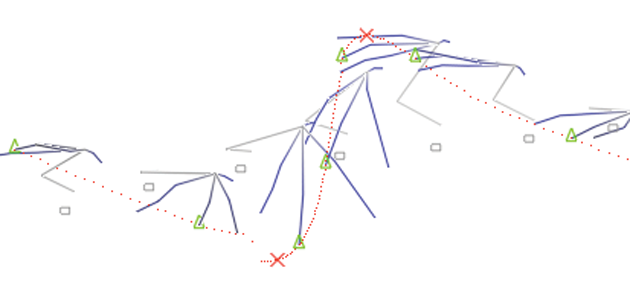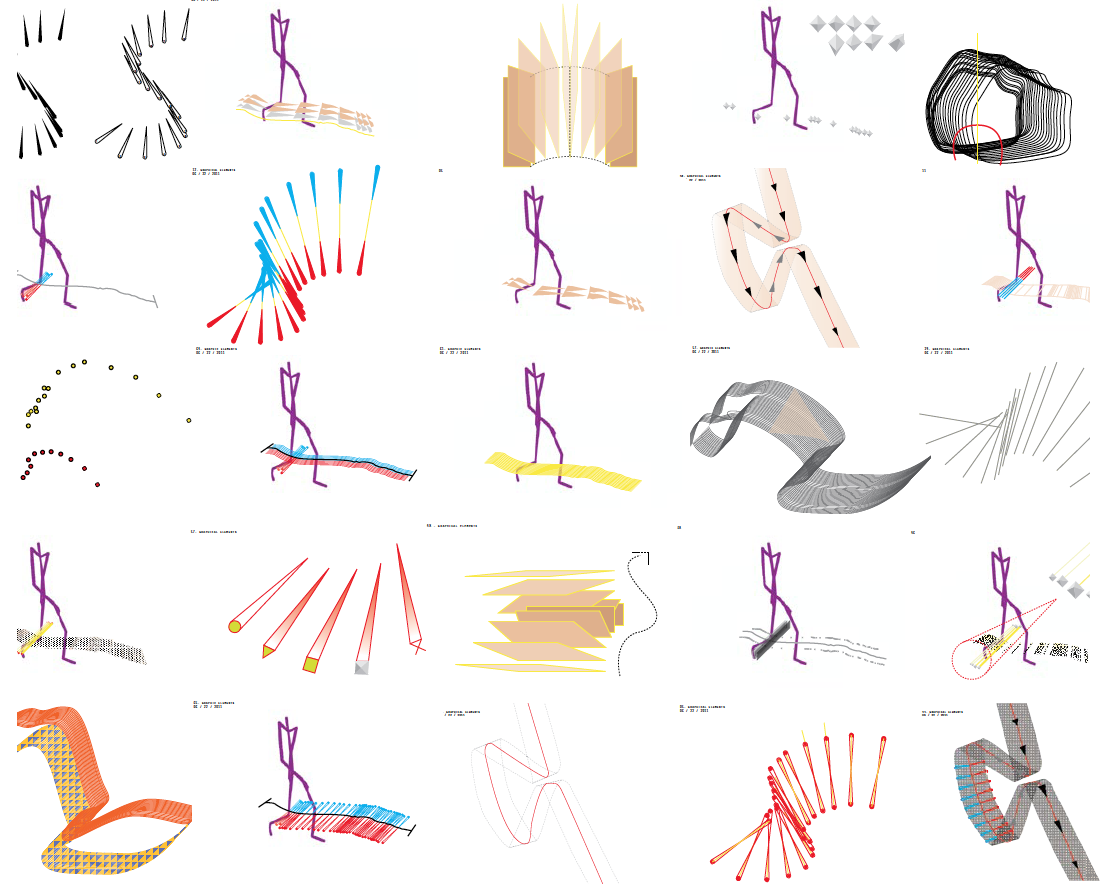
Picturing Motion
Analyzing Multidimensional Time-Varying Data through Perceptually Accurate Exploratory VisualizationOverview
NSF CAREER Project IIS-1054783
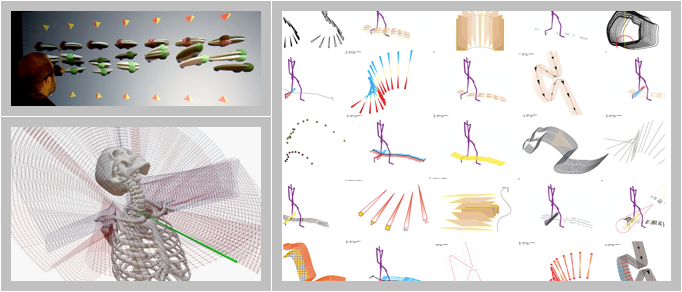
Top-Left: A perceptual study evaluates design guidelines for visualizing complex 3D motions in immersive stereoscopic environments.
Bottom-Left: An animated visualization of spinal kinematics compares pre- and post-treatment motion data and reveals important differences in the spatial arrangement the instantaneous helical axes of motion calculated for the data.
Right: A sample of some of the hundreds of graphic designs for scientific visualizations of motion data that MFA graphic design students have created together with computer science students.
Project Overview
The goal of this research project is to transform the way that complex time-varying scientific phenomena are analyzed using computers. The project makes possible a new style of aggregate and comparative analysis of large, high-resolution scientific motion databases. The approach combines the high-bandwidth channel of the human visual system with computational algorithms and interactive data exploration.
The experimental research is integrated with educational efforts, including training computer scientist students in interdisciplinary research via a new course, a new writing-focused curriculum, and broadly disseminated lesson plans. Artists and designers are direct participants in the research, opening up new career paths in the sciences for visually creative students. Hands-on interactive visualizations engage 7-12th grade minority and underprivileged students in scientific computing.
The results include experimentally grounded guidelines for perceptually accurate visualization, new techniques for coupling dimensionality reduction with illustrative data visualization, and tested human-computer interfaces for exploring spatially complex multidimensional data. These results are significant because they lead to new understandings of the coupled relationship between people and computing, specifically helping scientists move from vast, complex datasets to new insights. The broader impacts of the work lie in applications to multiple disciplines including musculoskeletal biomechanics, evolutionary biology, and geospatial science. Through specific applications, the work yields insights that could lead to improved treatments for spinal disorders and diseases in children and adults, and inform new theories of historical diversification among animals. Project results will be disseminated via open source software, videos, publications, and demos, all available on this project web site.
Keynote Address
Keynote Address
